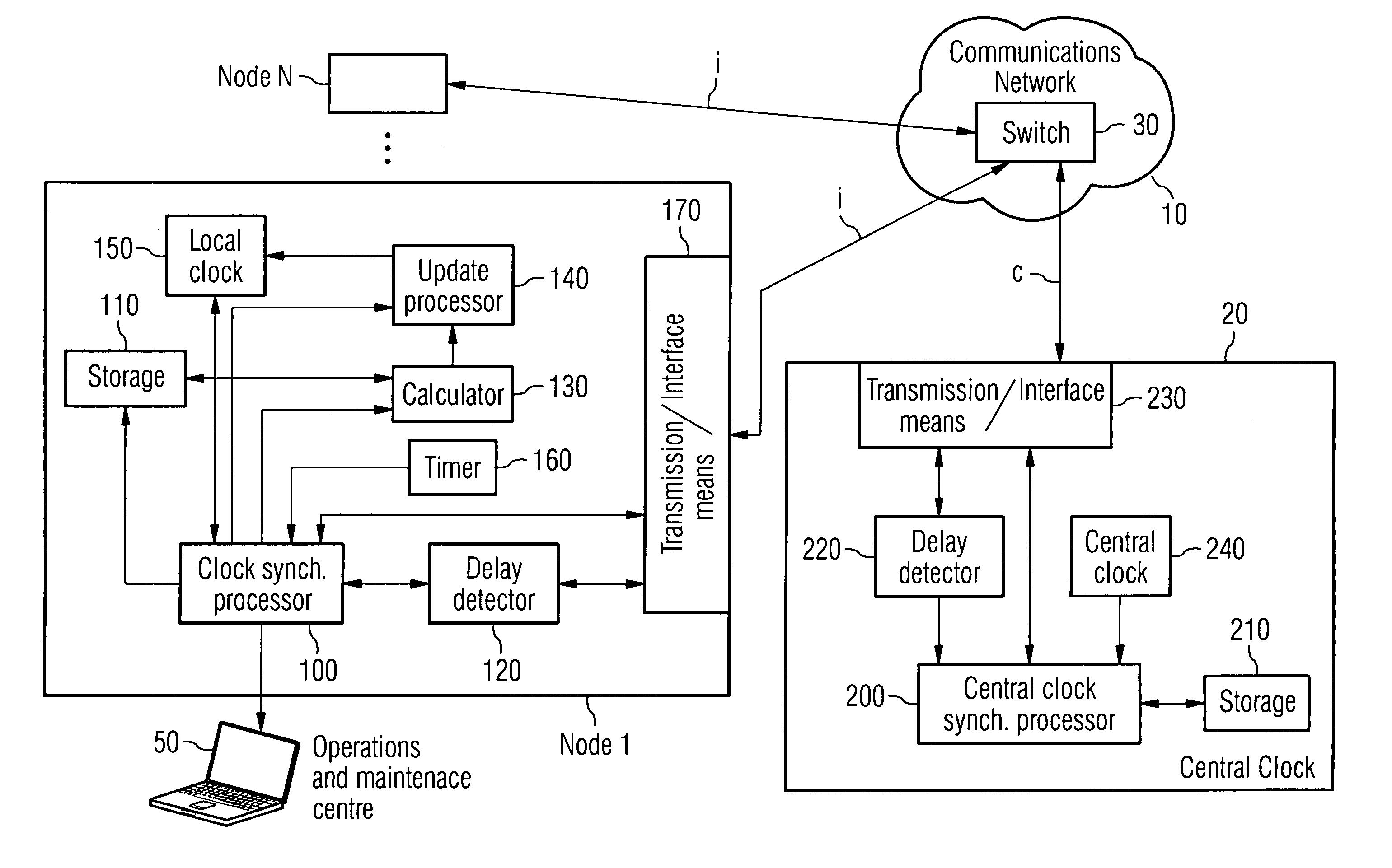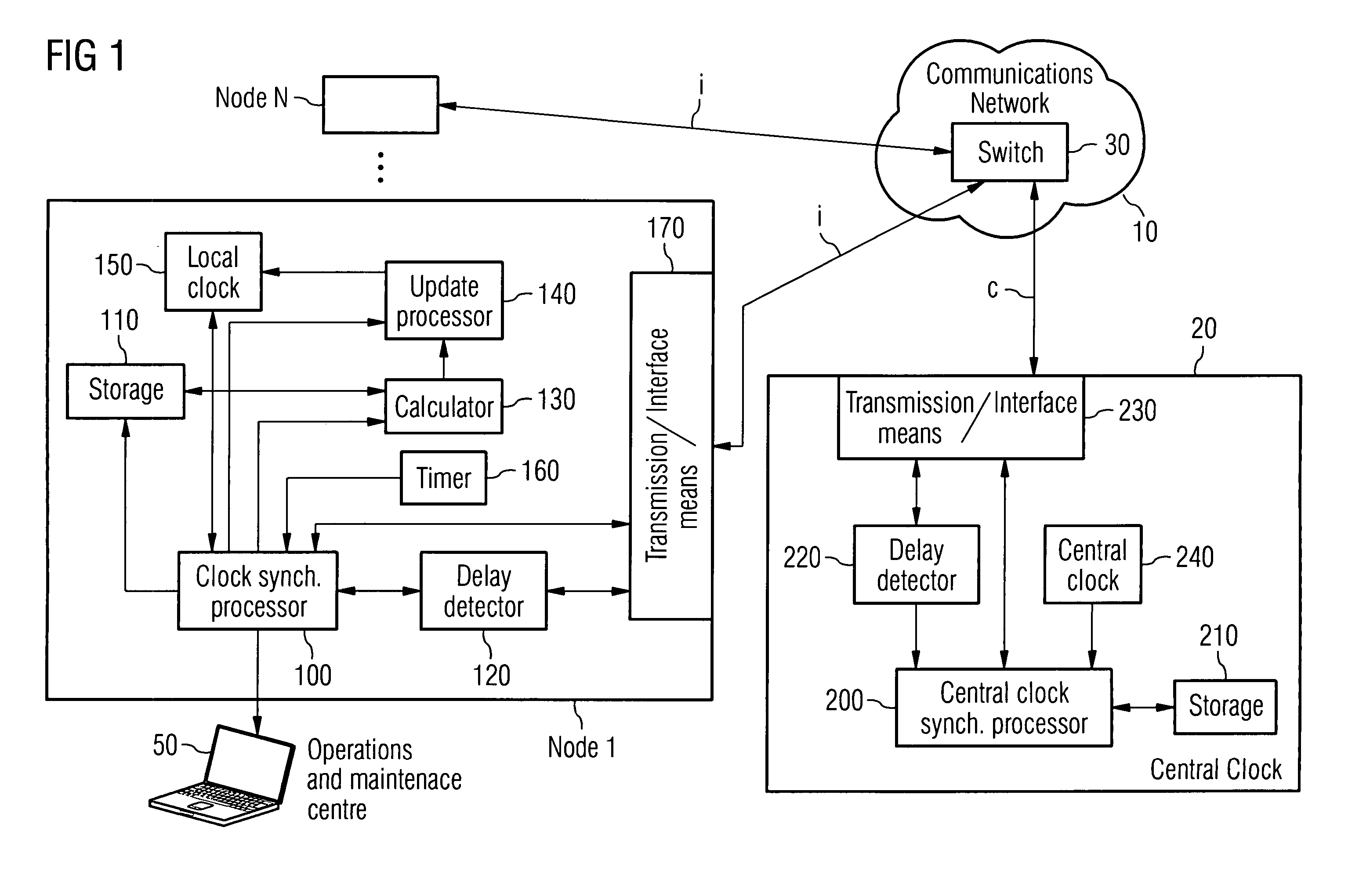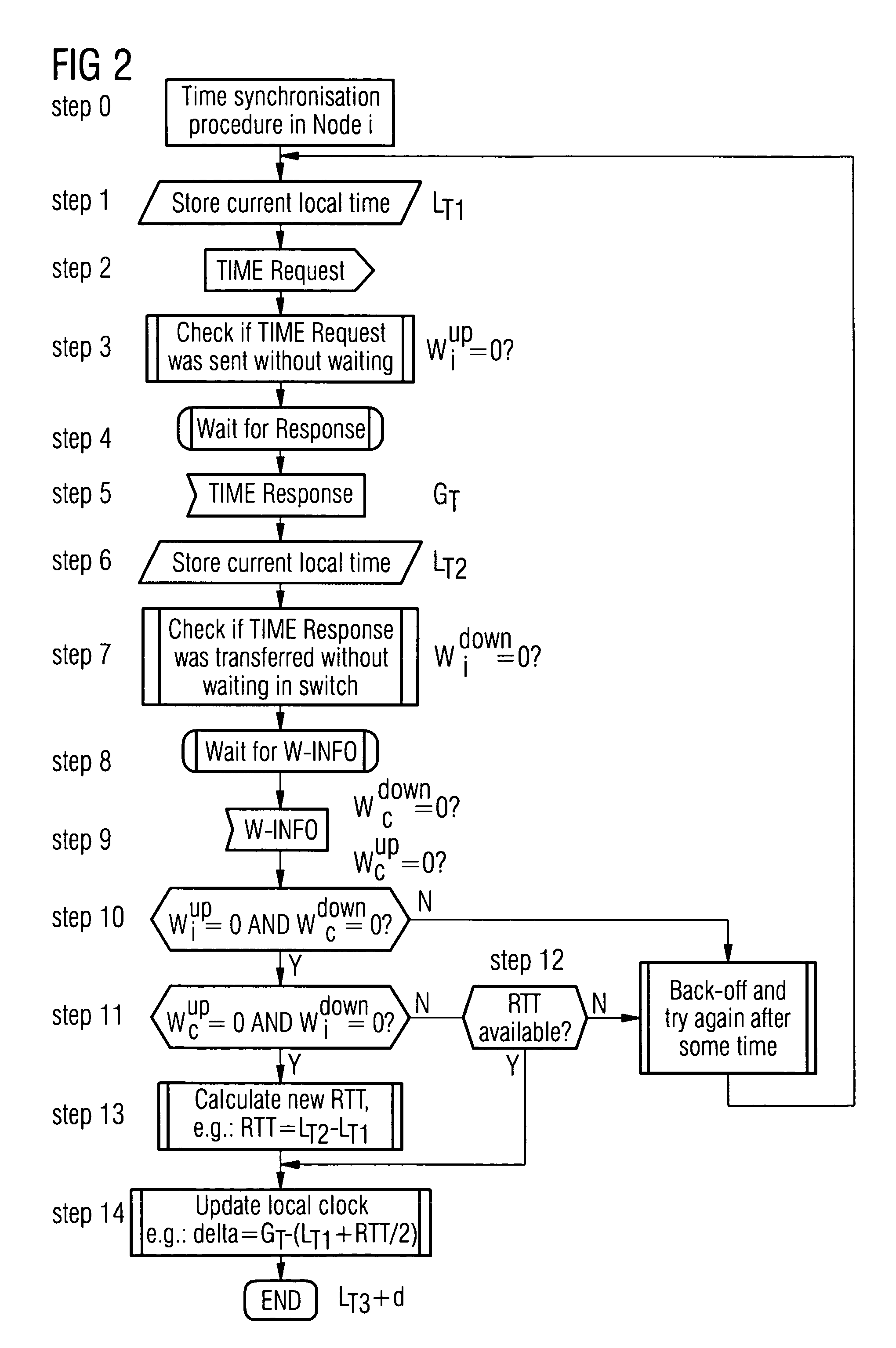Method and system for time synchronisation in a distributed communications network
ime synchronisation technology, applied in the field of method and system for time synchronisation in a distributed communications network, can solve the problems of high cost, probability delay, and inability to accurately and precisely measure the time synchronisation data transfer, and achieve the effect of efficient network and precise and exact manner
- Summary
- Abstract
- Description
- Claims
- Application Information
AI Technical Summary
Benefits of technology
Problems solved by technology
Method used
Image
Examples
Embodiment Construction
[0028] As can be seen in FIG. 1, a typical distributed network consists of N nodes, e.g, node 1, . . . node N, that are connected to a central clock 20 and to other destinations through a switch 30. The terms “global clock”, “master clock”, “central clock” are synonymous and well known in the art. Each one of the N nodes 1, . . . N has a local clock 150 that requires time synchronisation with the more precise central clock. In order for this to be achieved, each node will communicate with the central clock via the switch 30. As it can be seen from FIG. 1, the central clock is connected to the switch through a dedicated link thus ensuring that only a small amount of traffic is carried on this link.
[0029] Each node, as can be seen in FIG. 1, comprises of a clock synchronisation processor 100 which executes the procedure from the side of the node, storage means 110 for storing the different time values necessary for performing the synchronisation procedure, a delay detector 120 for de...
PUM
 Login to View More
Login to View More Abstract
Description
Claims
Application Information
 Login to View More
Login to View More - R&D
- Intellectual Property
- Life Sciences
- Materials
- Tech Scout
- Unparalleled Data Quality
- Higher Quality Content
- 60% Fewer Hallucinations
Browse by: Latest US Patents, China's latest patents, Technical Efficacy Thesaurus, Application Domain, Technology Topic, Popular Technical Reports.
© 2025 PatSnap. All rights reserved.Legal|Privacy policy|Modern Slavery Act Transparency Statement|Sitemap|About US| Contact US: help@patsnap.com



